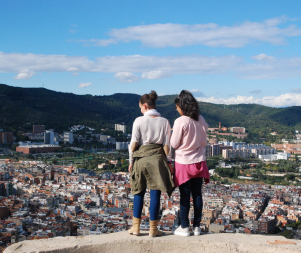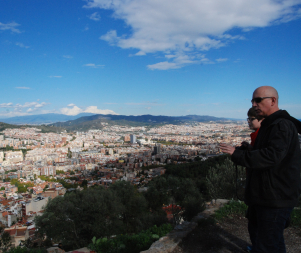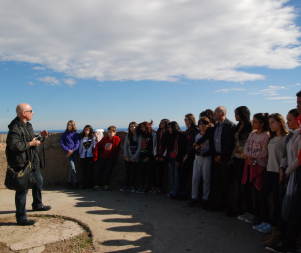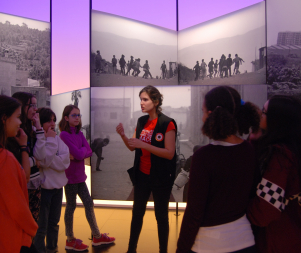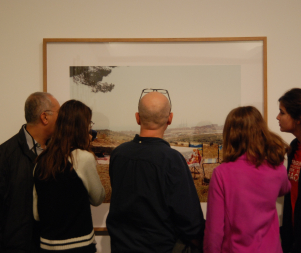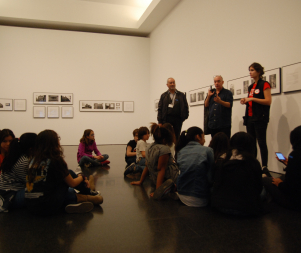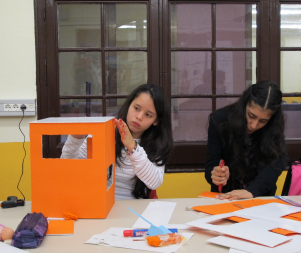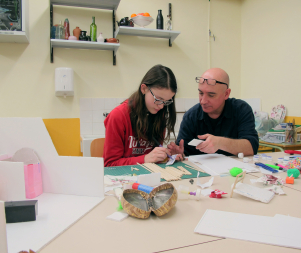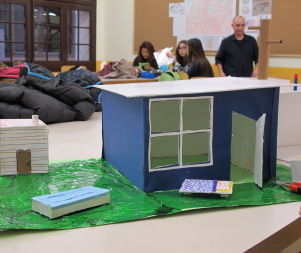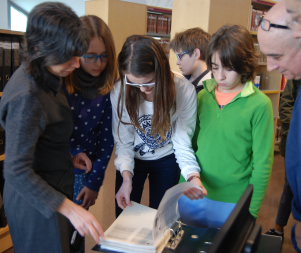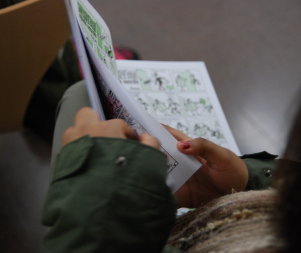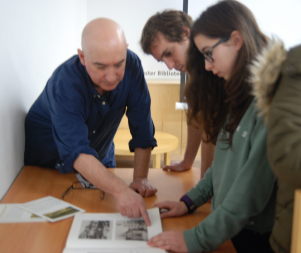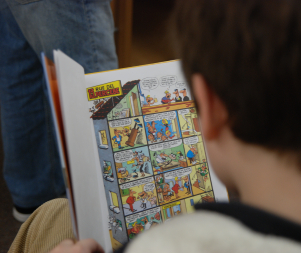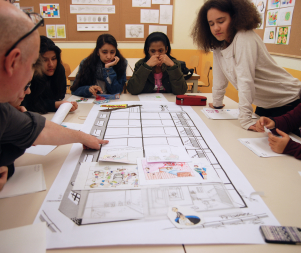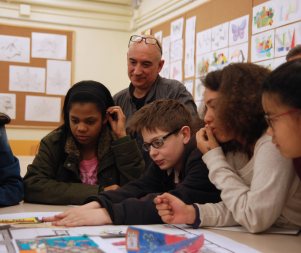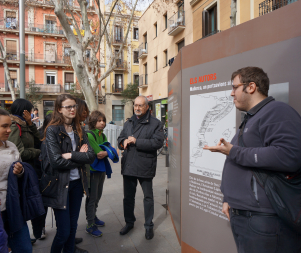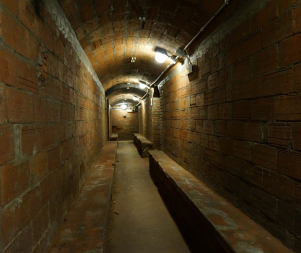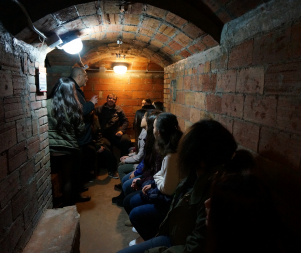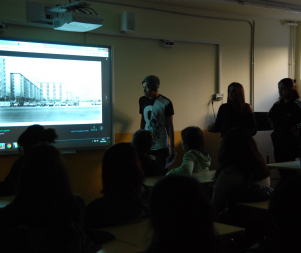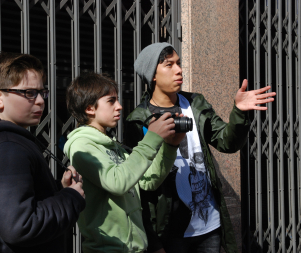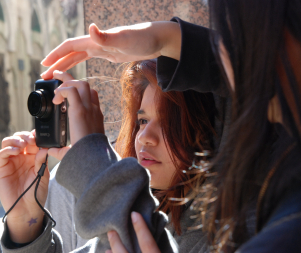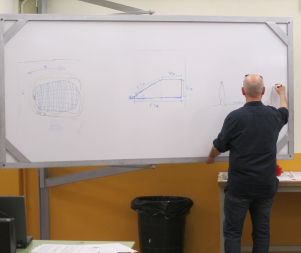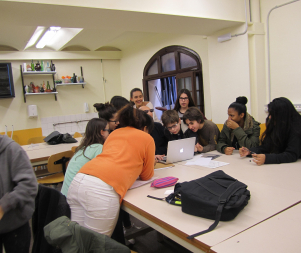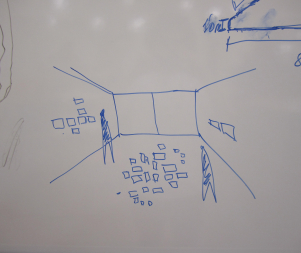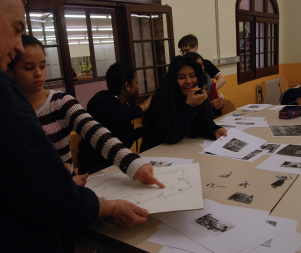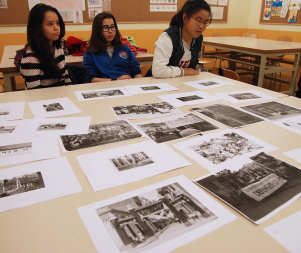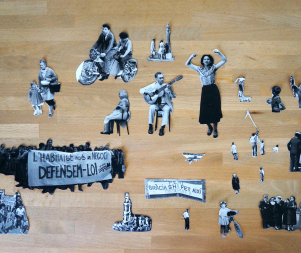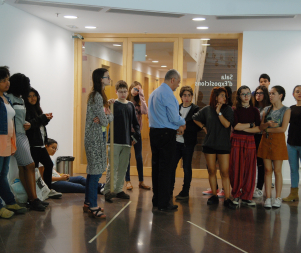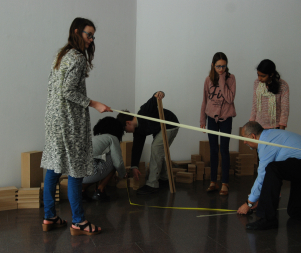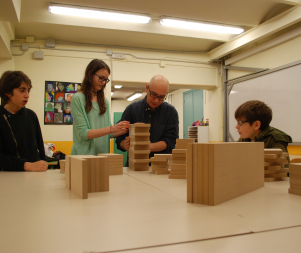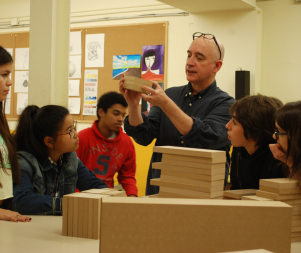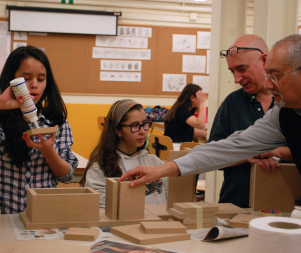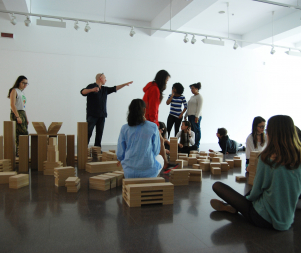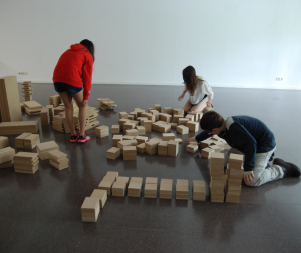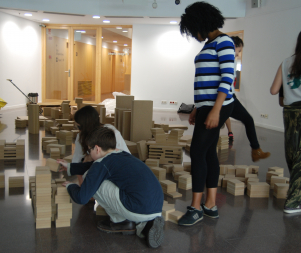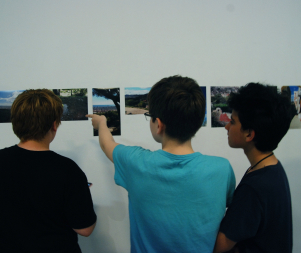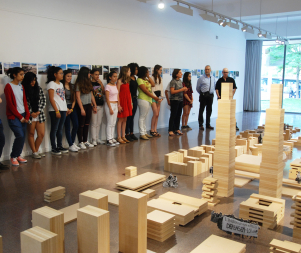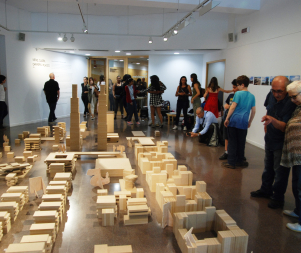- 14th EDITION 2022 / 2023
- 13th EDITION 2021 / 2022
- 12th EDITION 2020 / 2021
- 11th EDITION 2019 / 2020
- 10th EDITION 2018 / 2019
- 9th EDITION 2017 / 2018
- 8th EDITION 2016 / 2017
- 7th EDITION 2015 / 2016
- 6th EDITION 2014 / 2015
- 5th EDITION 2013 / 2014
- 4th EDITION 2012 / 2013
- 3rd EDITION 2011 / 2012
- 2nd EDITION 2010 / 2011
- 1st EDITION 2009 / 2010
Domènec IN RESiDENCE at the School Josep Serrat i Bonastre
Outing and photographic exploration: the gun batteries of El Carmel
The field of work: the city
In order to define the area that the work should focus on, an outing was organised to the at El Carmel. Looking down on the whole city, we talked about its configuration while also discovering the history of the shanty town there. We returned to school on foot to visit the different arrangements of streets and neighbourhoods, while the pupils explored different spaces photographically. In the classroom, we watched the film Barracas [Slums] and the pupils marked where they live, the school, their everyday routes, the site of the shanty town and so on on a map.
Visit to the exhibition of photographs by Xavier Miserachs at MACBA
Photographs of the city of Barcelona
A guided tour is organised of the temporary exhibition that MACBA devoted to Xavier Miserachs. The group also saw and discussed several works from the permanent collection. This visit enables the group to see photos of scenes in the Barcelona streets in the 1950s and to discover the critical gaze that Xavier Ribas, Daniela Ortiz and others cast on the city.
Beginning work on a model: the house
In order to start thinking about and understanding the minimum unit for a city, we define the house. The group draws the floor and front of the houses where they live and in small groups design “ideal” homes. These plans will be used to construct a number of models.
Session at the Jaume Fuster library
The group visits Biblioteca Jaume Fuster, a library near the school. The visit is divided into two parts: firstly, an introduction to the services provided by the library; and, secondly, the group discovers and discusses the local resources: the Gràcia Photographic Archive and the Bruguera Collection. The pupils select a number of books and documents for discussion with the whole group.
A housing block: an example: 13 Rue del Percebe
The group discover the comics published by Bruguera and the books 13 Rue del Percebe and begin to work on the idea of community and the relations that are generated between different units in a housing block. The starting point is the layout of the comic book itself, and the pupils work on this idea to invent their own housing block. They discuss the communities in the housing blocks where they themselves live, infusing elements from their own environments in this housing block they plan to create.
Air-raid shelter in Plaça del Diamant
One of the elements that the group is to discover as part of the residency is the Gràcia neighbourhood and its configuration, the result of action and construction by local residents. One site visited, particularly relevant from this standpoint, are the air-raid shelters in Plaça del Diamant, built during the Civil War by local people.
Photographic exploration in the environs of the school
In order to continue the photographic explorations of the immediate environment that began with the first outing to the gun batteries at El Carmel, a joint activity is organised with pupils taking the Art baccalaureate. These art students guide the exploration based on knowledge that they had acquired previously at a workshop entitle, Fotografia en curs, which takes place at MACBA and the CCCB. Before going out, the group look at and comment on images of Barcelona by different photographers.
Review... imagining a large model
A session devoted to revision before making the final piece. The group work on the idea of making a model of a city after viewing photographs of architects with the models for their projects in various cities. The idea also revolves around the city grid. The group begins to discuss issues related to materials, proportions and the exhibition space.
Discovery of a selection of old photographs from the Archives of Gràcia
The group makes a large selection from the old photographs conserved in the Archives of Gràcia, which are located in Jaume Fuster Library. The photographs portray people and groups going about their everyday activities in the street. The pupils decide the photographs to be included in the model, taking into account the desire to assemble a diverse body of work focusing on different stories, episodes and moments in history.
Visit to the exhibition room: imagining, planning, designing
Having received confirmation that the space for showing the model will be the exhibition room at Jaume Fuster Library, several sessions are devoted to measuring this space and drawing a plan of it. Consequently, the final final dimensions of the model are decided, as are the places where visitors will circulate and so on. The room is prepared with marks on the floor to indicate the main sites in the section of the city that will be represented.
Construction: the modules
The model is built from wooden modules. Construction begins with the smaller, more habitual buildings, and then continues with the larger, singular and more outstanding sites. To give the city overall cohesion, the group counts the number of buildings of each type completed so as to plan subsequent sessions.
Transport and assembly. Giving the model form
The final sessions are devoted to carrying the pieces for the final model to be assembled in the exhibition room. The decisions made now take into account the ideas that the group have worked on over the course as they reproduce parts of the city that they have observed at first-hand. At the same time, human figures are distributed around different sites in the model according to the different spaces and the activities that take place there.
Presentation at Jaume Fuster Library
The pupils make the presentation of the work in the exhibition room at Biblioteca Jaume Fuster library along with the artist and the teacher. At this presentation, they explain the work and creative process they have followed over the course. The event is attended by families and friends of the pupils, teachers and people linked to the world of culture, as well as representatives from ICUB and Barcelona Education Consortium. Following the presentation, visits are arranged for other groups of pupils at the school, guided by members of the group that took part in the residency.

